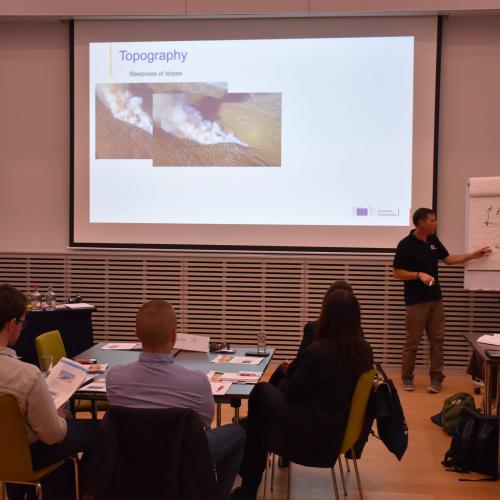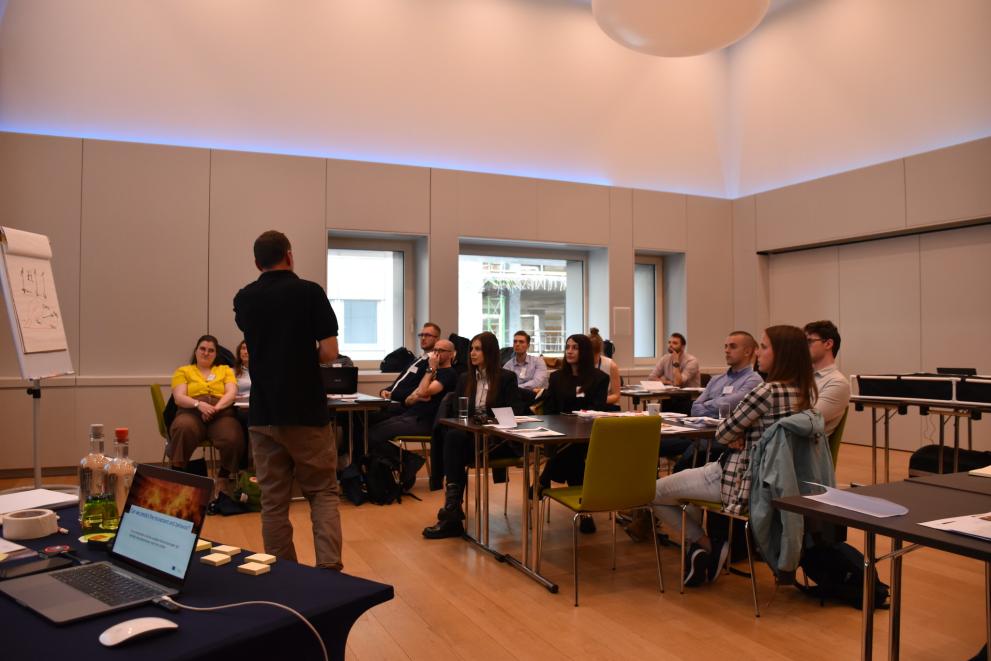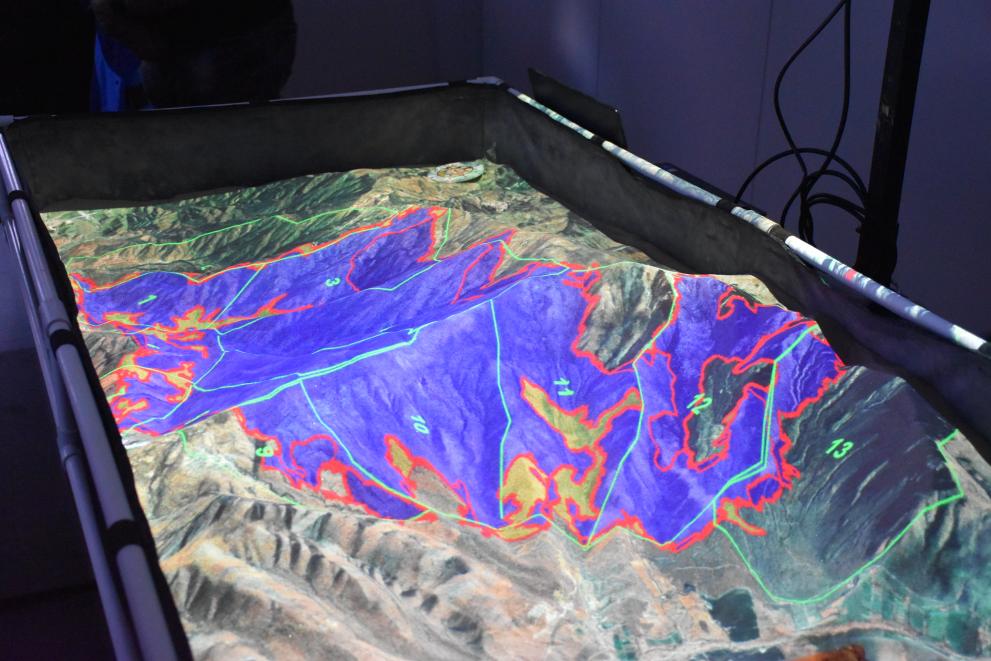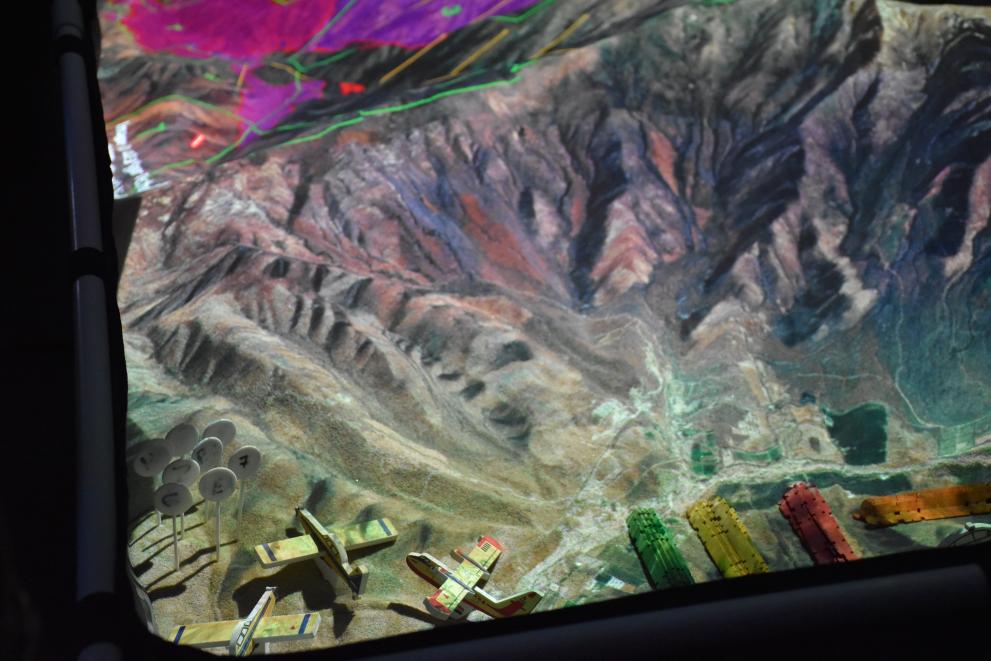
Collaboration and resilience building: meet Pau Costa
Interview with Juan Caamaño, a firefighter from Spain and a founding member of the Pau Costa Foundation.

Juan Caamaño is a firefighter from Spain and a founding member of the Pau Costa Foundation. As the head of Training and Operations, Juan's ground-breaking approach to training, integrating theoretical knowledge, practical applications, and innovative tools like the 'Pau Costa Wildland Fire Simulation Sandbox,' redefines the landscape of wildfire response training. His vision emphasises realistic simulations and hands-on experiences to enhance decision-making during fire incidents.
I am one of the founders of the Pau Costa Foundation, established in 2011. Part of the idea of the creation was triggered by a European Union project called FIRE PARADOX. This project brought together different perspectives on prescribed burning and the use of fire, merging scientific, academic and operational fields. This coming together was the seed of the Foundation, as after the project was completed, many involved saw the need to create a platform to exchange knowledge and experiences.
We wanted to connect scientific and operational visions, as well as technology and the business world, which felt disconnected. This led to the formation of the Foundation as a meeting point for those interested in learning, evolving and having a different view on wildfires.

‘We wanted to connect scientific and operational visions, as well as technology and the business world, which felt disconnected’.
We try to make training as realistic as possible. The training I received almost 20 years ago in Spain consisted mainly of theoretical classes but lacked a focus on skills and competencies to apply that knowledge in real environments and scenarios. Therefore, we have established three fundamental pillars in our training projects. First, knowledge is acquired through online platforms and classes. Then, there is the practical, face-to-face part, which involves working in the field or emulating forest fires in classrooms through the digital sandbox. The third pillar involves applying the knowledge and skills acquired for example through EGIF exchange programmes, where theory is put into practice in real scenarios.
The digital sandbox is a tool that has been used for a long time. The concept comes from the military, but we have given it an innovative twist by using a movable projector. We got the idea when we visited ‘La Pinetta’, an academy in Italy that used this type of tool with fixed projectors. We realised it was an invaluable tool to analyse historical fires, understand fire behaviour based on weather patterns and learn applicable lessons to improve our performance. This device allows us to design past operations and generate discussions around those scenarios to improve decision-making in future incidents.
‘The sandbox concept comes from the military, but we have given it an innovative twist by using a movable projector’.
Much of our collaboration comes from projects launched by DG ECHO or the European Commission as a whole. It is essential for us to participate in these projects, as it allows us to establish partnerships with various institutions and organisations that have different experiences from our own. We collaborate with universities, scientific and research institutions. We are currently collaborating with the Forest Science and Technology Centre of Catalonia, universities in Greece and Italy, through projects funded by the European Commission.
It is crucial to form partnerships with the scientific world to verify whether the decisions we make are realistic and have a medium to long-term impact from a scientific perspective to improve ecosystems, biodiversity, and landscape resilience.
The question arises how to integrate all this with the economic vision. Therefore, we are developing ideas on the evolution of the rural economy, and we are looking to create projects that promote extensive livestock farming, generating a resilient and diversified landscape, as these create a landscape that is not conducive to the development of large forest fires. All this must be backed up by science. Moreover, science and technology must be present on the ground, as they are sometimes concentrated in laboratories and scientific-technological environments, far from the reality and the real problems on the field. From the Foundation, our approach is to bring this perspective to those scientists and technologists, adapting their vision or message to the ‘real world’ in which we operate.

Science and technology must be present on the ground, as they are sometimes concentrated in laboratories and scientific-technological environments, far from the reality and the real problems on the field.
In Spain and Portugal, we have seen that the wildfire problem continues to persist and, on many occasions, even worsens. We have observed that the vision of the last 20 years to address the problem in those two countries has focused mainly on investing in more resources, neglecting prevention or the intervention of other institutions and visions in fire prevention, such as livestock, farmers or hunting. All of them have a role in the territory and contribute to how economic activities evolve in it. Additionally, there is climate change, with longer forest fire seasons and adverse weather conditions.
‘All of them have a role in the territory and contribute to how economic activities evolve in it’.
It is crucial to work on the landscape, as wildfires develop as a function of the landscape. Focusing solely on ignition, i.e., who starts the fire, does not have a significant impact, as ignitions will be constant and inevitable, whether accidental or not. The real power of fire lies in its ability to spread through the landscape, if you control the landscape (fuel) you will control the fire.
‘If you control the landscape (fuel) you will control the fire’.
We can intervene in the landscape, by returning to good management practices, involving actors such as hunters, farmers, ranchers, businesses, but also protecting the ecosystem, biodiversity, and conservation. It is essential to build consensus among various parties to create a resilient landscape that does not facilitate the spread of large wildfires. The ‘Declaration on the management of large wildfires in Spain’ led by the Pau Costa Foundation is an example of a consensus reached at many levels.
This is not about eliminating fire from Mediterranean and dependent ecosystems, as this has been proven to be a mistake. Instead, we propose to reintroduce fire in a controlled and managed way, creating fuel discontinuities that prevent the spread of dangerous fires. Landscape management and control is the way forward: investing more in landscape management and less in aerial or ground resources, although the latter are still necessary for immediate fire response.
Another important key to this approach is society. We are actively working to raise awareness and change entrenched perceptions in society. For a long time, fire has been demonised, despite being a historical ally of mankind. It is crucial to change this mentality and understand the relationship between fire and our ecosystems. In the case of Spain, we live in a country prone to fires, and we must learn to live with this element.

Territorial management will determine whether fires are low intensity due to proper management or high intensity due to lack of intervention. Projects aimed at raising public awareness and eliminating the message of ‘everyone against fire’ are part of our efforts to face the future.
‘For a long time, fire has been demonised, despite being a historical ally of mankind’.
We have many challenges ahead of us. We live in a very complex world and forest fire remains an extremely difficult thing to deal with. This is not only because of the changing dynamics of the territory, but also because of the need to reach agreements with many people. Our ecosystems developed in a different climate than the one we will have in 20 or 40 years, so it is crucial to help them evolve in a healthy way that is adapted to the new climate they will face.
‘It is crucial to help our ecosystems evolve in a healthy way that is adapted to the new climate they will face’.

The Knowledge Network editorial team is here to share the news and stories of the Knowledge Network community. We'd love to hear your news, events and personal stories about your life in civil protection and disaster risk management. If you've got a story to share, please contact us.
Sectors